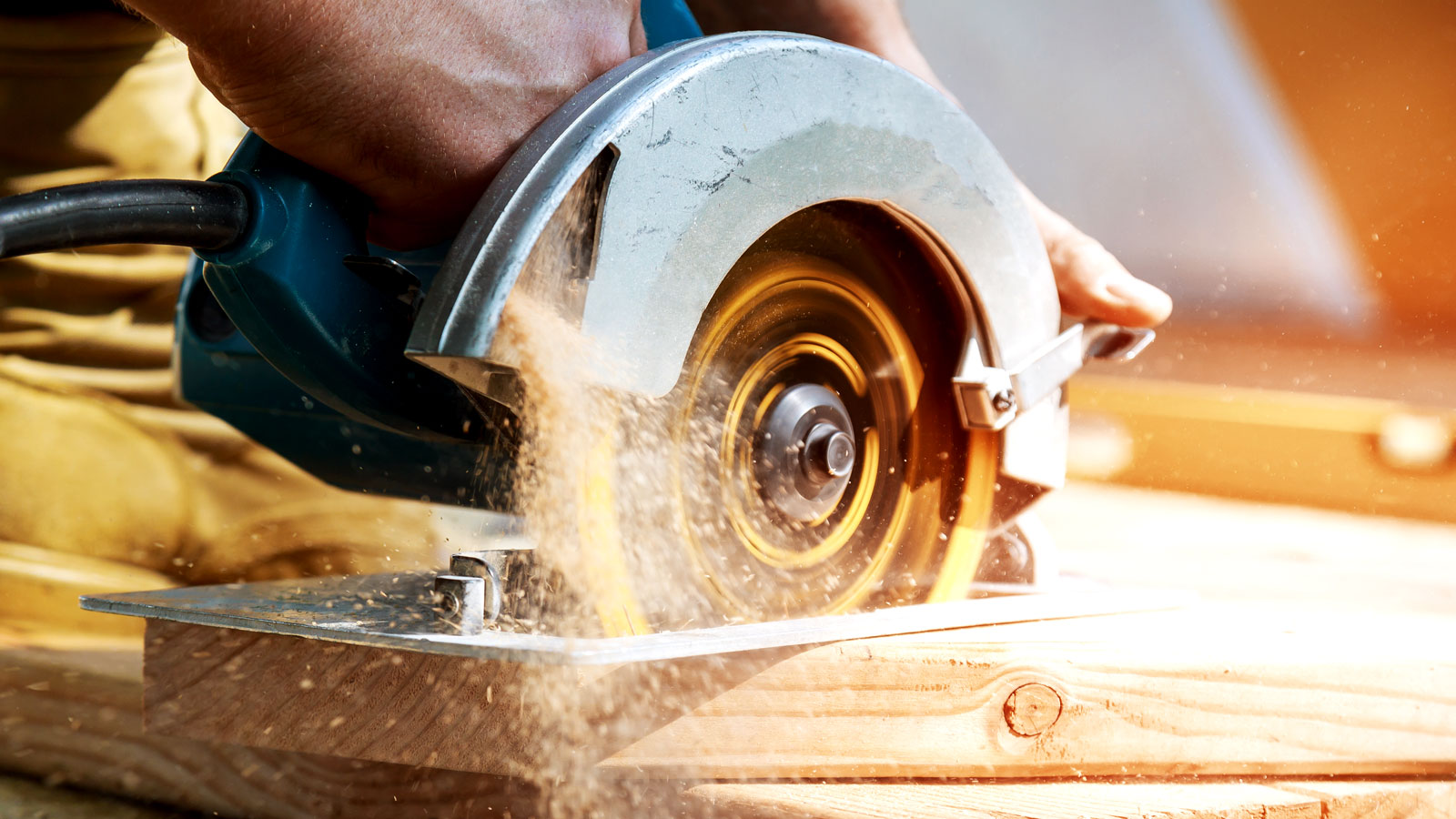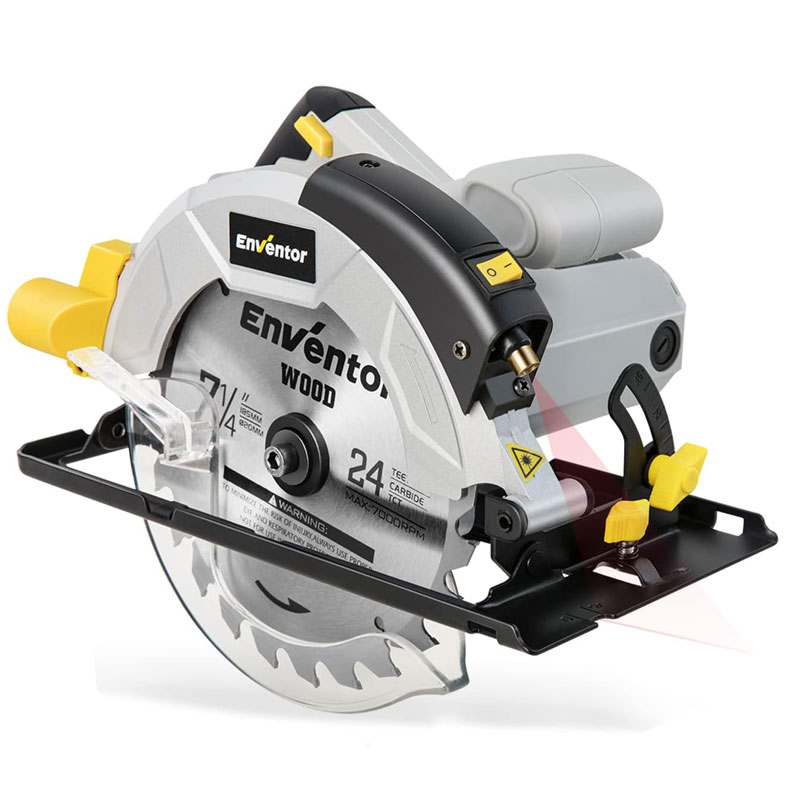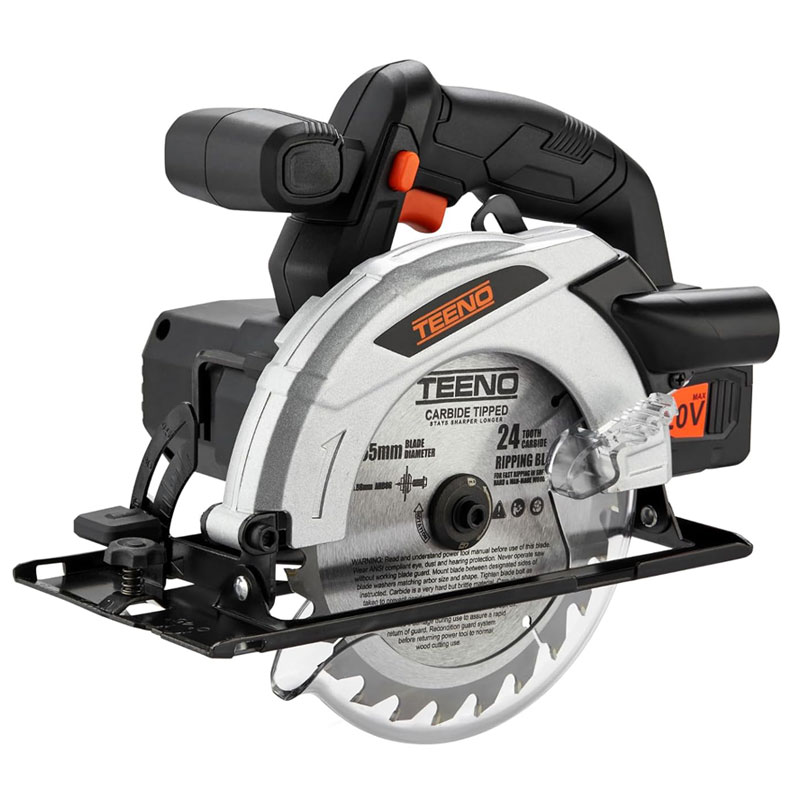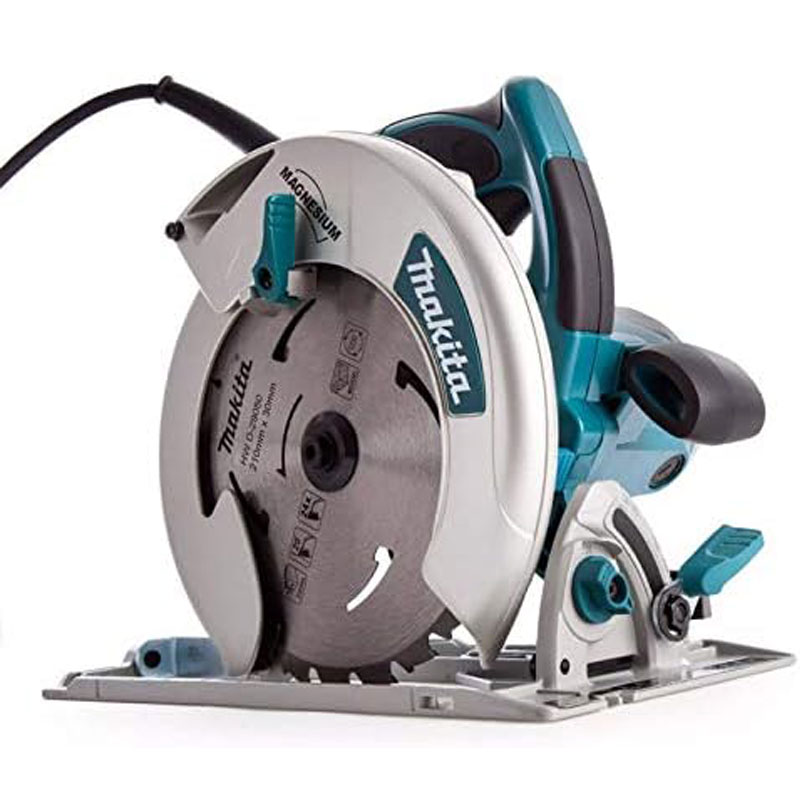How to use a circular saw: 14 tips and tricks for great cuts
Get expert tips on how to use a circular saw the right way to get straight neat cuts and avoid kickback and unwanted injuries

- 1. Safety first
- 2. Know your circular saw
- 3. Choose the right blade
- 4. Set blade depth correctly
- 5. Deal with kickback
- 6. Replace your blade regularly
- 7. Beware of used timber
- 8. Keep a straight line
- 9. Kiss and lift for accuracy
- 10. Factor in blade width
- 11. Use a guide
- 12. Stop the squeeze
- 13. Get an extension cord
- 14. Best side down
Knowing how to use a circular saw may seem straightforward. But if you're new to the world of circular saws there’s plenty of subtle secrets and tips to make sure you get the best from it. And, to help make sure you don’t get any serious injuries that can cut your DIY career short.
A circular saw is undoubtedly one of the types of power saw DIYers should have in their tool collection. It’s useful for all sorts of home improvement projects where you need quick cuts of timber and board. Just remember don't push too hard and use a smooth motion.
Follow our expert tips, tricks and techniques to help you get the most out of a circular saw on your next DIY project.
How to use a circular saw
1. Safety first
Circular saws need to be treated with caution, especially if you’re a novice when it comes to using one. Craig Parkins, owner of Parkins Bespoke Building has a few simple suggestions that will help ensure you can use a circular saw safely. “Have both hands on the saw when cutting and make sure the saw guard is on and working correctly.”
2. Know your circular saw
Circular saws will differ from brand to brand, so it makes sense to quickly run through any safety features, discover where any adjusters are and find out how to change a blade. Give the manufacturer's handbook a read through – even if it's a skim read – to make sure you’ve not missed anything.
3 circular saws ideal for DIY projects
3. Choose the right blade
Circular saw blades come in many guises, so it's important that you, “Use the right blade for cutting timber or a board material.” explains Parkins. First you need to make sure that you have a blade that fits your circular saw. Note the blade diameter when looking for a new blade and also make sure that the centre hole (aka as the bore) is the right size. These are typically 10mm-30mm.
Finally choose a type that matches the job you are working on. If cutting wood a general purpose wood saw blade is ideal for most jobs, though you can get specialist blades for different types of wood, i.e. plywood, and masonry. The more saw TPI or teeth a blade has, the smoother the cut.
Bring your dream home to life with expert advice, how to guides and design inspiration. Sign up for our newsletter and get two free tickets to a Homebuilding & Renovating Show near you.
4. Set blade depth correctly
“Have the saw depth 3mm deeper than the materials you're cutting.” recommends Parkins. Why? This will produce more efficient cutting and cleaner cuts and lessen the chances of an accident happening with the exposed blade.
5. Deal with kickback
A dull, blunt or twisted circular saw blade can cause the saw to kickback when using it. Knots, splits, cracks in timber can also create kickback so check your timber before you start cutting. As soon as you feel kick back happening, let go of the trigger, relax your grip (but still hold the saw steady) and wait for the blade to come to a stop by itself.
6. Replace your blade regularly
Not only will a blunt blade cause kickback it will offer a poor cut, meaning a poor finish. Not good if you're tackling a job that needs precision and a clean edge. Check your blade and do a test run before using, and replace if necessary. We suggest you always keep spare blades, ready for when needed.
7. Beware of used timber
Be cautious when using used timber, “Try not to cut second hand timber that has had nails in it as you might hit the odd nail that might have been left in the timber”, recommends Parkins. “And definitely wear safety glasses or goggles if you are cutting second hand timber.”
8. Keep a straight line
If you're cutting freehand there’s a good chance – especially if you're a novice – that you will stray from the line you’ve marked out. Practice definitely makes perfect, but until you get to that stage the simple thing to do is stop and go back to where the line is straight and start again. An alternative is to use a tool like the Kreg Circular Saw Guide from Amazon.
9. Kiss and lift for accuracy
To help make sure that you are getting the right starting point start up the saw line up the blade and give a very light touch on the wood to make sure that you are lined up with a mark. If cutting an angle, pull back the saw slightly and lower the blade onto your mark to start the cut.
10. Factor in blade width
Don't forget to factor in the width of your saw blade when cutting with a circular saw. Different teeth produce different width cuts. If you are looking to cut a piece of wood in half you won't get to two equal cuts unless you cut up the centre of any marked lines.
11. Use a guide
Most circular saws come with a rip guide which is integrated in the base plate. Make sure to use this to get straight cuts on smaller cuts typically up to around 10cm. A DIY alternative is to clamp, nail or screw into the waste side of the wood a wooden baton the entire length of the cut. Line up before you secure the baton to ensure you get the right size cut.
12. Stop the squeeze
Do not cut across the centre of a piece of timber spanned across two sawhorses. As you get towards the end of the cut the two parts will drop and squeeze the blade causing the saw to kick back. Move the timber so the cut is over the edge of one of the sawhorses, so it will drop naturally.
13. Get an extension cord
If using a corded circular saw there’s a good chance that the cord won't be long enough to reach from the power outlet to the cutting surface. Invest in a cable reel extension like this SMJ Electrical15 Metre Reel Pro Cable Reel from Amazon. Make sure it is at least 15m and has two sockets. When using a circular saw make sure that the cable leads away from the saw.
14. Best side down
The teeth on circular saw blades point upwards so when they spin they create a smoother cut on the underside of the wood, not the one you are looking at. So if you are cutting wood that has a face that will be displayed, place face down so you are looking at the back, or less desirable face.
While every DIYer should have one of the best circular saws in their collection, it may or may not be the best saw for your latest project. Check out our types of saws guide to see what you might need.
Steve Jenkins is a freelance content creator with over two decades of experience working in digital and print and was previously the DIY content editor for Homebuilding & Renovating.
He is a keen DIYer with over 20 years of experience in transforming and renovating the many homes he has lived in. He specialises in painting and decorating, but has a wide range of skills gleaned from working in the building trade for around 10 years and spending time at night school learning how to plaster and plumb.
He has fitted kitchens, tiled bathrooms and kitchens, laid many floors, built partition walls, plastered walls, plumbed in bathrooms, worked on loft conversions and much more. And when he's not sure how to tackle a DIY project he has a wide network of friends – including plumbers, gas engineers, tilers, carpenters, painters and decorators, electricians and builders – in the trade to call upon.




